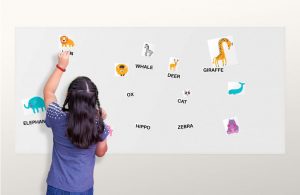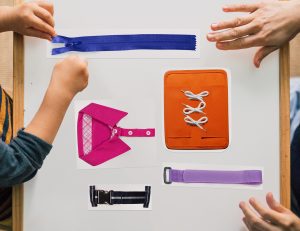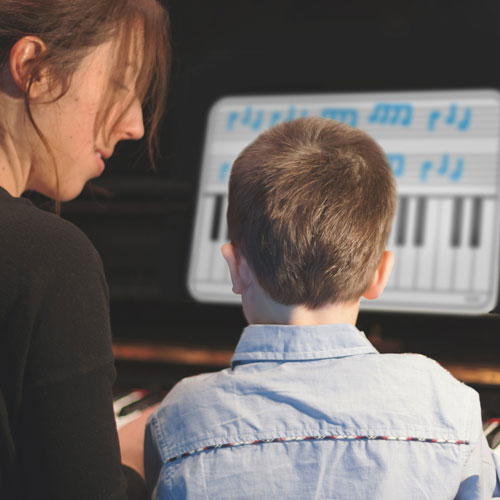
We live in a time of constant stimulation, whether from computers, phones, or television, leading to visual content playing a role in our everyday lives. Despite the constantly moving world, visual aids or learning holds more appeal to viewers than that plain text. Whether you are a teacher in a classroom, a proctor for a business meeting, or teaching safety classes, visual aids stimulate learning, allowing students to comprehend information faster, remember information for longer, and build interest.
What are Visual Aids?
There are many different visual aids, ranging from props, models, photographs, illustrations, charts, graphs, and physical demonstrations. Visual Aids can be categorized as visual manners typically paired with written or spoken information.
 Visual aids can be utilized in any presentation despite their intended purpose, as long as they are used correctly. The best type of visual aids are those in support of what the presenter is saying and help keep the audience's train of thought on the intended topic.
Visual aids can be utilized in any presentation despite their intended purpose, as long as they are used correctly. The best type of visual aids are those in support of what the presenter is saying and help keep the audience's train of thought on the intended topic.
When used correctly, visual aids work best to add clarity to the presenter's message, increase the interest in the presenters' message, stimulate the audience and enhance the presenters' credibility. Visual aids can be an enhancer for educational lessons leading to long-term retention of information.
How do Visual Aids Work?
Visual aids are vital for memorizing information and storing it within their long-term memory. Visuals help learners grasp concepts easier by stimulating their cognitive abilities due to how our brains work when digesting information.
Images are the simplest and most effective way to ensure information gets stored as long-term memory. Our short-term memory processes words and can only retain about seven bits of information, whereas images are directly processed by our long-term memory, where they find themselves kept. Our brains tend to work best with visual images, resulting in 90% of the information in the brain being transmitted in a visual format, along with the human eye being able to register 36,000 visual messages every hour.
images are directly processed by our long-term memory, where they find themselves kept. Our brains tend to work best with visual images, resulting in 90% of the information in the brain being transmitted in a visual format, along with the human eye being able to register 36,000 visual messages every hour.
Visual memories are encoded in the medial temporal lobe of your brain, the same place where emotions are processed. The brain is set up so that visual stimuli and emotional responses become easily linked, leading to the two sides working together in forming memories. This system helps the user engage with content and create emotional reactions that are key to information retention, causing faster and stronger reactions towards visuals versus text. Hence, powerful images and visual metaphors allow for solid impressions and lasting retention in learners.
Visual Aids and Learning.
When teaching to a classroom, presentation group, or peers, visual aids are a vital tool that should be utilized to optimize the learning experience. The use of visuals helps summarize content into smaller, easily digestible chunks for students within the classroom. Visuals are proven to help improve learning tremendously for multiple reasons, whether you are a visual learner or not.
 Visual aids help students grasp concepts presented by them through stimulating imagination and affecting their cognitive capabilities. There are many techniques to integrate visuals into your teachings; some you may already do naturally. In practice, visual images like maps, graphs, and pictures of people or locations in convergence with text or information allow for captured attention and memory retention. Photographs capture attention, but they help learners understand the connection between unfamiliar and familiar. Showing students objects that are spheres or cylinders is a more effective way to teach children than simply telling them the characteristics of those shapes.
Visual aids help students grasp concepts presented by them through stimulating imagination and affecting their cognitive capabilities. There are many techniques to integrate visuals into your teachings; some you may already do naturally. In practice, visual images like maps, graphs, and pictures of people or locations in convergence with text or information allow for captured attention and memory retention. Photographs capture attention, but they help learners understand the connection between unfamiliar and familiar. Showing students objects that are spheres or cylinders is a more effective way to teach children than simply telling them the characteristics of those shapes.
The use of visual aids in learning allows teachers to expand significantly the information they are passing on to their students, resulting in a new powerful way to teach and bring subjects alive to the classroom. The connection of real-life aspects with learning allows students to simplify complicated subjects and become more excited about learning. For example, when students learn about the Oregon Trail, incorporating colorful maps, photographs, and a popular computer game will allow them to interact with the topic and understand the information more. Another example could be having your students hold rocks, examine leaves and feel dirt to learn the differences between their characteristics, allowing these lessons to be stored in their long-term memories. Another way could be teaching students about money and using money boards, toy cash, or pictures to understand counting cash. The use of visuals allows students to wrap their minds around the concepts being presented to them and create memories that are stored long-term in their brains.
Visuals are an incredible tool that allows students to understand concepts, capture their attention and connect the information to their lives. The best visual aids support what the presenter is teaching, allowing the audience to keep a train of thought on the current topic. Visual aids can come in many different varieties: props, enlarged photographs, illustrations, maps, diagrams, charts, and physical demonstrations.
Tip: When in doubt, picture it out!
Sources:
- Admin. "Studies Confirm the Power of Visuals to Engage Your Audience in ELearning." Studies Confirm the Power of Visuals to Engage Your Audience in ELearning, https://www.shiftelearning.com/blog/bid/350326/studies-confirm-the-power-of-visuals-in-elearning.
Why Choose Us.
We are a Small Business whose products are Made in the U.S.A. We specialize in dry erase boards and dry erase wallcoverings, portable dry erase units, high-quality custom printed whiteboards, fast shipping, and not to mention, five-star customer service. Over the last three decades, we've worked hard to deliver industrial quality whiteboard solutions that won't hurt the budget.
If you have an idea for a custom whiteboard, you can call us at 866-366-1500, or you can head to our website to learn more about our products!





